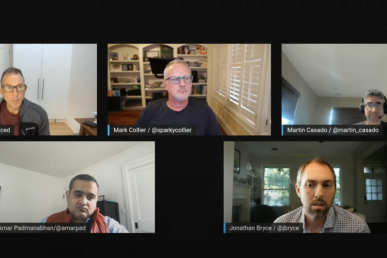You could say that open source was born out of both frustration and necessity.
In 1980, Richard Stallman, irked after being blocked from modifying the program a glitchy new laser printer, kicked off the movement. He launched the GNU operating system which, combined with Linux, runs on tens of millions of computers today.
Stallman’s four essential freedoms – the right to run, copy, distribute, study, change and improve the software – define the free software world. Then open source was coined as a term to soothe the suits, promoting the practical values of freedom and downplaying the ethical principles that drove Stallman.
A generation later, necessity is not enough. “Despite being more business-friendly, open source was never a ‘business model,’” writes Thierry Carrez, VP of engineering at the OpenStack Foundation, in a three-part series on the topic. “Open source, like free software before it, is just a set of freedoms and rights attached to software. Those are conveyed through software licenses and using copyright law as their enforcement mechanism. Publishing software under a F/OSS license may be a component of a business model, but if is the only one, then you have a problem.”
Call it the free beer conundrum: the idea that you pay nothing for the product means that it’s free (as in free speech) but not something that comes without cost. The price tag, or lack thereof, has always been a red herring, Carrez notes. It’s really more about allowing the user to kick the tires before going all in. “You don’t have to ask anyone for permission (or enter any contractual relationship) to evaluate the software for future use, to experiment with it, or just to have fun with it. And once you are ready to jump in, there’s no friction in transitioning from experimentation to production.”
What really sets open source apart? Sustainability, transparency, its appeal to developers and the community that supports it.
“With open source you have the possibility to engage in the community developing the software and to influence its direction by contributing directly to it. This is not about ‘giving back…’ Organizations that engage in open-source communities are more efficient, anticipate changes and can voice concerns about decisions that might adversely affect them. They can make sure the software adapts to future needs by growing the features they’ll need tomorrow.”
His series comes at a critical time for open source. It’s undeniably a success — powering everything from TVs, smartphones, supercomputers, servers and desktops to a $17,000 rifle — but that’s exactly why it’s so easy to take for granted. And notable companies still find ways to profit from the code while flipping the bird at the open-source ethos. It’s bigger than a few bad actors or lawsuits: some say there’s a fight on for the very soul of open source.
So now what? Carrez closes with a call to action: “Open-source advocates and enthusiasts need to get together, defining clear, standard terminology on how open source software is built and start communicating heavily around it with a single voice. Beyond that, we need to create forums where those questions on the future of open source are discussed. Because whatever battles you win today, the world does not stop evolving and adapting.”
Check out his whole series here.
- OpenStack Homebrew Club: Meet the sausage cloud - July 31, 2019
- Building a virtuous circle with open infrastructure: Inclusive, global, adaptable - July 30, 2019
- Using Istio’s Mixer for network request caching: What’s next - July 22, 2019

)










